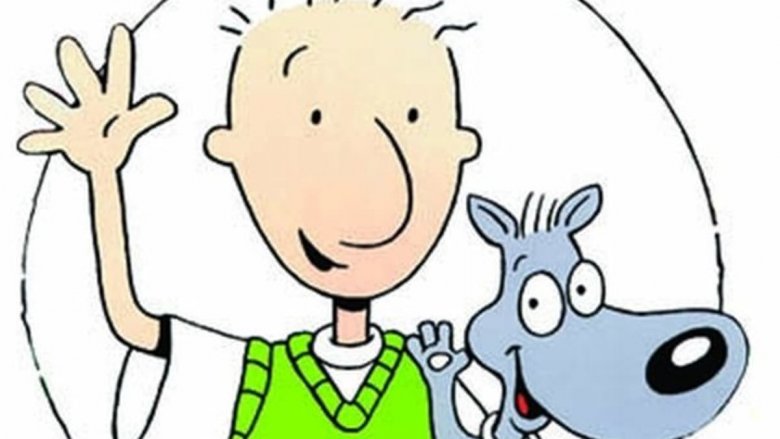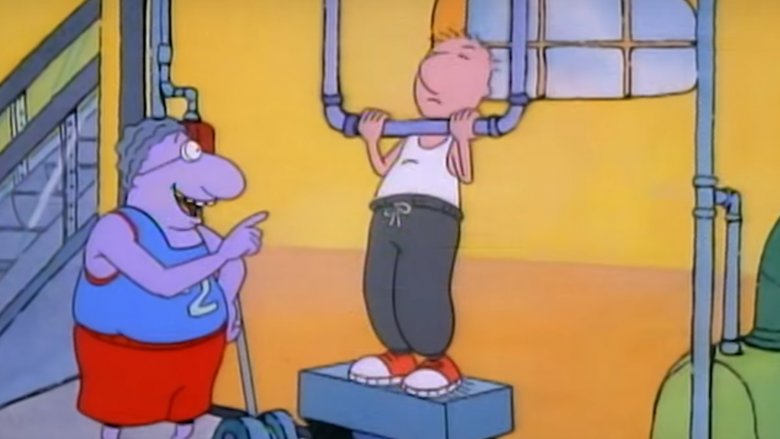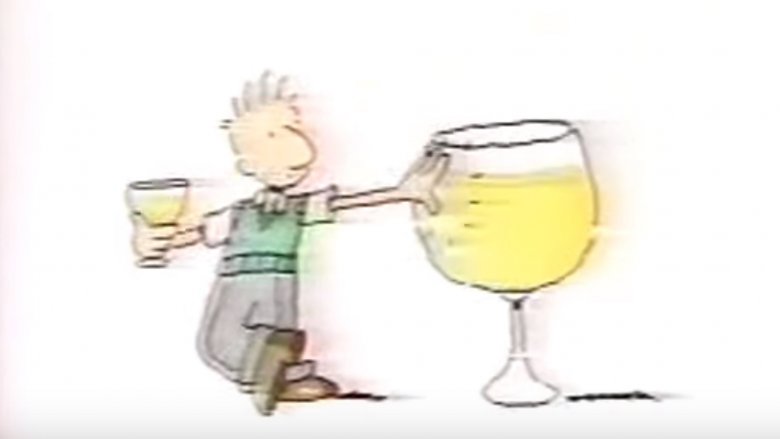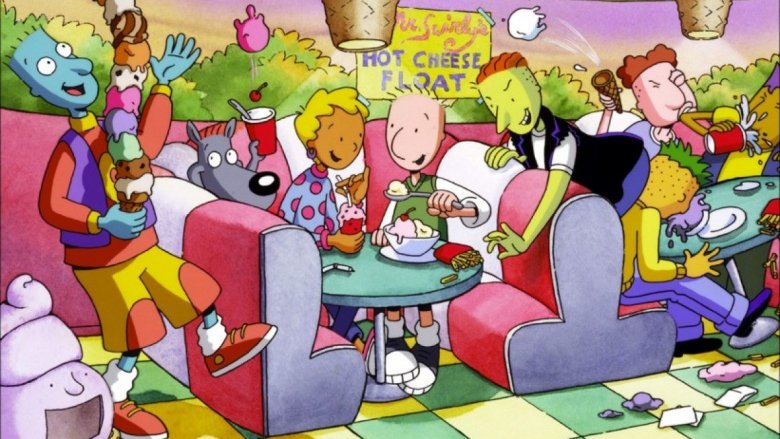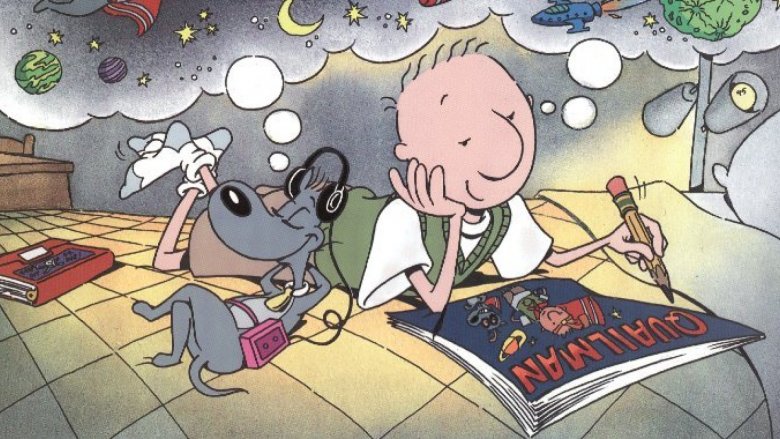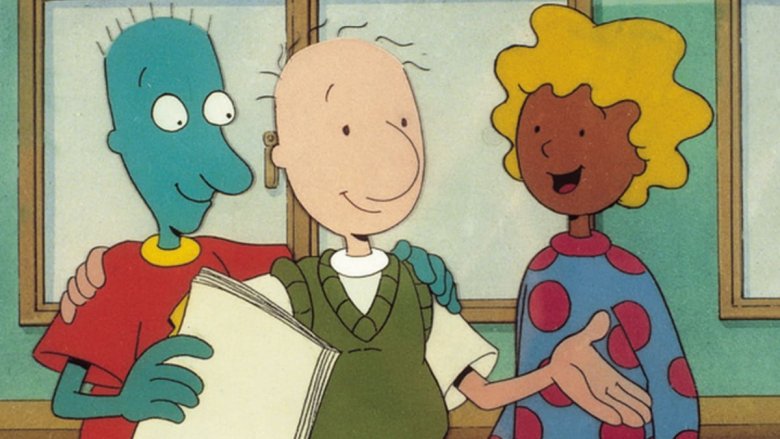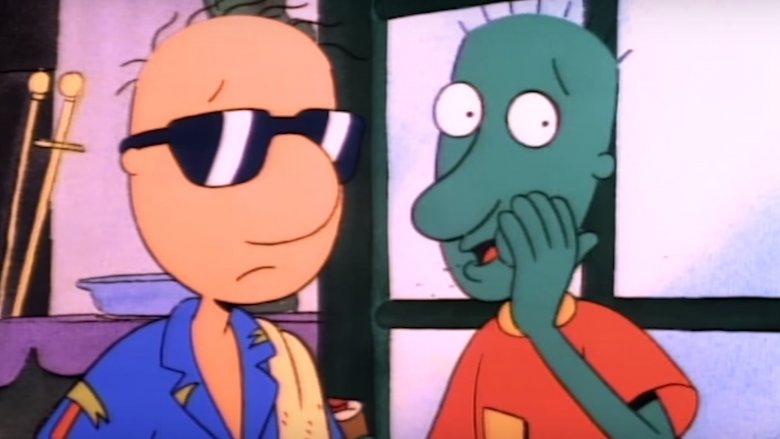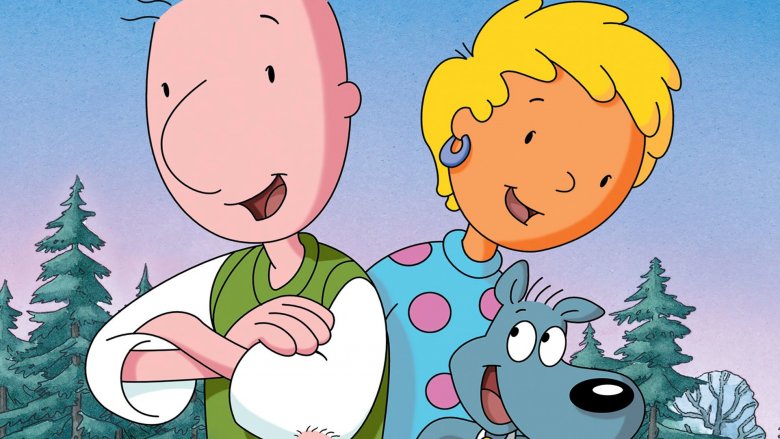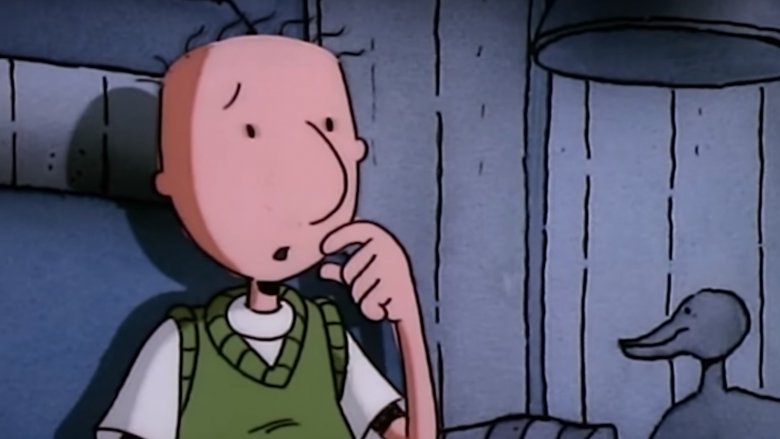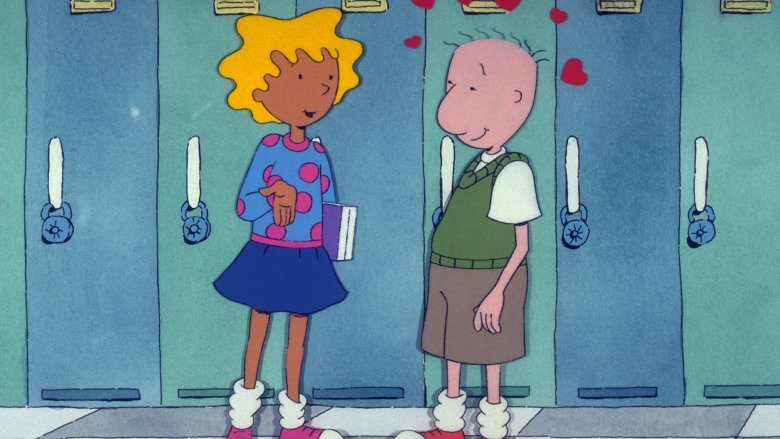The Untold Truth Of Doug
Nickelodeon's Doug is still a major source of nostalgia for early millennials who grew up in the splat-TV era. The diary-style cartoon series centered on the life of a boy in small-town Bluffington as he grappled with the typical issues of youth — from navigating an unrequited infatuation with Patti Mayonnaise to concealing a superhero alter ego called Quailman who secretly boosted his self-esteem. Ultimately, it was the series' simplicity of style and wholesome storytelling that made it easy viewing for fans, without the heavy-handed messaging of some other youth programming in the era.
Doug Funnie's life was both relatable and charming to watch, and decades after its original run, Doug can still be seen as having entertaining takes on the malaise of school days. What you may not know about the series is how it became so beloved in the first place — and how it hit a few major speed bumps along the way during its brief run. Here's a look back at some things you might not know about Doug.
The life of Brian
It's hard to imagine Doug as being about anyone except, well, Doug, but creator Jim Jinkins originally had another moniker in mind while doodling away at his two-dimensional creation. In 2012, Jinkins told Splitsider that since the character was supposed to have a very "any guy" aesthetic, he wanted to name him something completely blasé. "At the beginning, I was calling him 'Brian.' It was sort of just a generic name. I was trying to find the most flat, neutral name," he explained. "If this were the 1940s, I would've called him 'Joe.' And I thought that 'Doug' had that feeling and that sound about it. It was a conscious choice because I wanted him to be this very neutral, middle-of-the-road guy."
Doug's middle name, Yancey, also had some interesting significance for Jinkins, as it was shared with own his grandfather, and the character's embarrassment over it stemmed from a very real place, as he had a childhood friend who also hated his own name growing up, much to Jinkins' amusement. Of course, it would be quite a few years before Doug as kids grew to know him really came to life onscreen.
An ad man first
Jinkins' Doug doodles originally existed as a sort of "alter ego" for the artist, who said he desperately needed an outlet from the real world where bills stack up and social problems are a lot more complicated than they are for the residents of his pseudo-utopia Bluffington. "I like to doodle, [and] Doug was just one of those guys I kept doodling over and over," Jinkins once explained of the character's origin.
Although the character would eventually become a household name — or even have an official name, in Jinkins' mind — his original screen debut was on a very different sort of medium. Commercial watchers might remember a very early version of Doug bouncing around on a pogo stick in his signature green vest for a 1989 Florida grapefruit juice commercial, and he and his prized pooch Porkchop were later seen in a 1990 USA Network commercial. That might seem like an unusual way for the artist to introduce his character in motion, but it served as a helpful highlight reel in getting some studio attention when it counted.
Bluffington is real
Eventually, Jinkins collected his drawings into a book called Doug Got a New Pair of Shoes. Although he initially received numerous rejections from publishing houses, he took the text to an executive at Nickelodeon named Vanessa Coffey, who was fielding original content pitches for the nascent network at the time. After reading the book and hearing Jinkins talk about his concept, Coffey had the network order up an eight-minute pilot called "Doug Can't Dance," and Jinkins went to work creating his own production studio to make it happen. (Little did any party know, the Nick team's willingness to take a chance on an unknown property would pay off in droves, raising the bar on its relevance among competitor networks.)
As he began developing other characters for the series, Jinkins again drew inspiration from his own life and the people he knew. Doug's love interest Patti Mayonnaise, for example, was based on Jinkins' own childhood crush, and he even told her she inspired the character after the show premiered. Supporting characters Skeeter Valentine and local bully Roger Klotz were also based on people Jinkins grew up with, and he reportedly re-established a connection with both as a result of the show.
No instruments needed
At first, Jinkins wasn't too hot on the decision to cast voice actor Billy West, who was also voicing the title characters for the network's other new cartoon series The Ren & Stimpy Show, to portray Doug. However, he admitted to Huffington Post that Coffey pushed for him to win the role, and, ultimately it worked out: "She understood something about Doug that hadn't even come to me yet."
West wasn't the only voice actor to make a major impact on the show. Actor Fred Newman was brought on to voice some of the zanier-sounding characters — including Porkchop, Skeeter, and Mr. Dink — and ended up creating that earworm of a theme song using the simplest of tools. Of that familiar "do do do" intro, Newman explained, "That wasn't Doug's voice, that was actually my voice ... We wanted to use as much as we could household objects, things that a kid could have, make it sound innocent. This is a kid's diary." Indeed, Newman relied on his unique beatboxing and "honking" skills to create a lot of the sounds, so for anyone trying to determine which odd instrument they're hearing on the show's soundtrack, well, it was often nothing more than the actor's own voice box.
The rainbow rebuke
The title character of Doug and his family were drawn to be very obviously Caucasian, but many other characters of the series boasted rather unusual skin colors — from Skeeter's teal complexion to Roger's lime green tone to Beebe Bluff's purplish appearance, there were very few hues left unused in the artist's collection by the time the show was done. Jinkins has attributed his decision to nix traditional skin tones on a "margarita stupor" and an abundance of marker choices, and he insists he wasn't trying to make any major sociopolitical statements.
"There have been a few people that have tried to get at this idea that the lead — the guy that's really important — is white. I'll be happy to go back and make him yellow, or purple, or magenta, if that works," he told HuffPost of a burgeoning controversy over his main character's melanin deficiency. "People are certain that Skeeter is an African-American guy. 'I'm like, well, he's blue!' You put together that he's the music guy and he does some rap stuff or several other things, great. If that's how you see him, that's great. It's not a bad thing, but I never planned it. Skeeter is blue and he's Doug's friend."
A network tangle
Doug was one of the shows that helped elevate Nickelodeon's status as a youth programming destination, but the network blundered big time when it let ownership of the show slip through its fingers. Following its original 52-episode run from 1991 to 1994, the network declined an option to renew the series for a new season, despite the creator being signed for 65 episodes. The decision was apparently a "shock" but based upon some budget tightening underway at Nickelodeon.
Their voluntary loss was Disney's gain, however, as it allowed the House of Mouse to scoop up the production rights and studio for Doug and proceed with carrying the hit show forward. The show then became retooled as Brand Spanking New! Doug as part of the ABC Saturday Morning Cartoon lineup for three additional seasons and spawned a line of toy merchandise with fast-food cross-marketing, a live-action musical and even a film called Doug's First Movie.
A short second life
Doug was a valuable property for Disney, but many fans look back on its run at the network with a lot of disdain for the major changes that were implemented. From the new theme song to the introduction of new characters with some cringeworthy plot lines and replaced voice actors or character appearances, the differences were stark enough to draw some dissatisfaction over the final seasons.
However, Jinkins himself is happy to shoulder all the blame for the changes that were made to Doug in its move from Nickelodeon to Disney. As he aged the character up to 12 to compensate for the loss of lead voice actor Billy West, he decided on the key alterations, admitting, "For all the kids who complain about what Disney did with Doug, almost every one of those changes came from me." One thing he won't cop to, though, is having any hand in West's dismissal. He and West were reportedly at odds over how much Jinkins pushed for him in the contract negotiation process, and it drove an apparent wedge between them at the time. Fortunately, they've since made nice and celebrated the series' 25th anniversary together with Fred Newman.
A little too high strung?
Although Doug isn't known for having those typical '90s PSA-type storylines (the "I'm So Excited" episode in Saved By the Bell, Stephanie Tanner's friend smoking on Full House), the show has been criticized for being a bit extreme about how tragic even the simplest of social setbacks were for its protagonist. Some have even gone so far as to compare the character's constant hypersensitivity and self-esteem problems to the concept of Catholic guilt.
As it turns out, there may be something to the notion that there was a religious undertone to the show. Jinkins told Splitsider he was raised in a "family of deep faith" and originally set out to become a youth minister. He purposefully peppered the series with moments of morality and even dropped a few hints that the Funnie family was a churchgoing group: "You wouldn't pick up on it unless you were looking for it. If it was Sunday afternoon, Doug's dad had on a long-sleeved white shirt and was waiting for lunch to happen. That was a carry-over from memories of coming home from church, and everyone being half-dressed in their Sunday finest but having taken off of their coats and ties." Although Jinkins said he tried to avoid "preaching" on the series, his character certainly decided to uphold a certain set of morals throughout the show's run.
A not so happy ending
The saga of Doug Funnie and Patti Mayonnaise never quite came to a close on the show or film, leaving fans to wonder whether the green-vested gentleman managed to win her heart for the long haul. According to Jinkins, the answer is likely no. He told Entertainment Weekly that he couldn't picture the two ending up together as adults because it's just not realistic: "Most people don't end up with their first love."
Perhaps Jinkins is merely jaded, though, based on his own experience later in life with the real-life person who inspired Patti. In a Nick Animation podcast, he recounted his unlikely reunion with the woman in question and admitted that they didn't enjoy some sudden romance with one another, despite his hopes that it might happen. After she reached out to invite him over for dinner, he admitted to accepting her invitation and wondering if something might spark ... until he was introduced to her husband.
